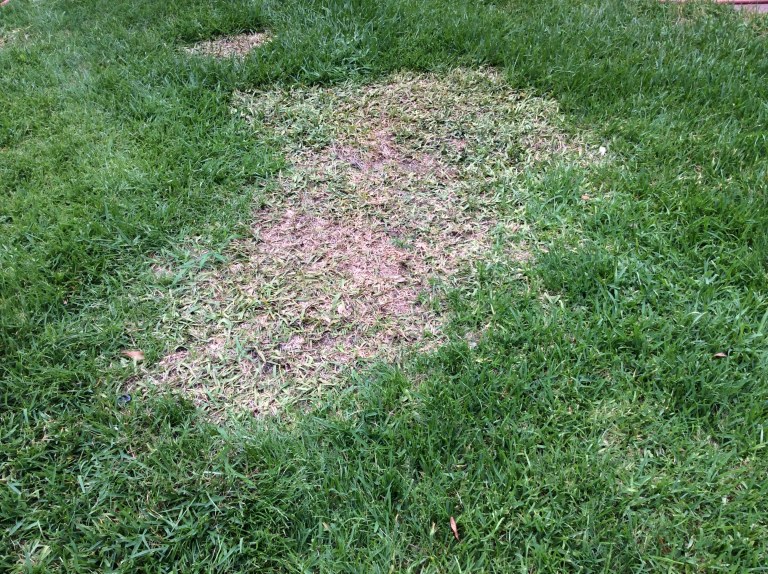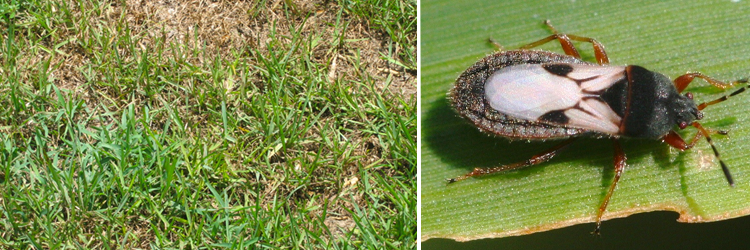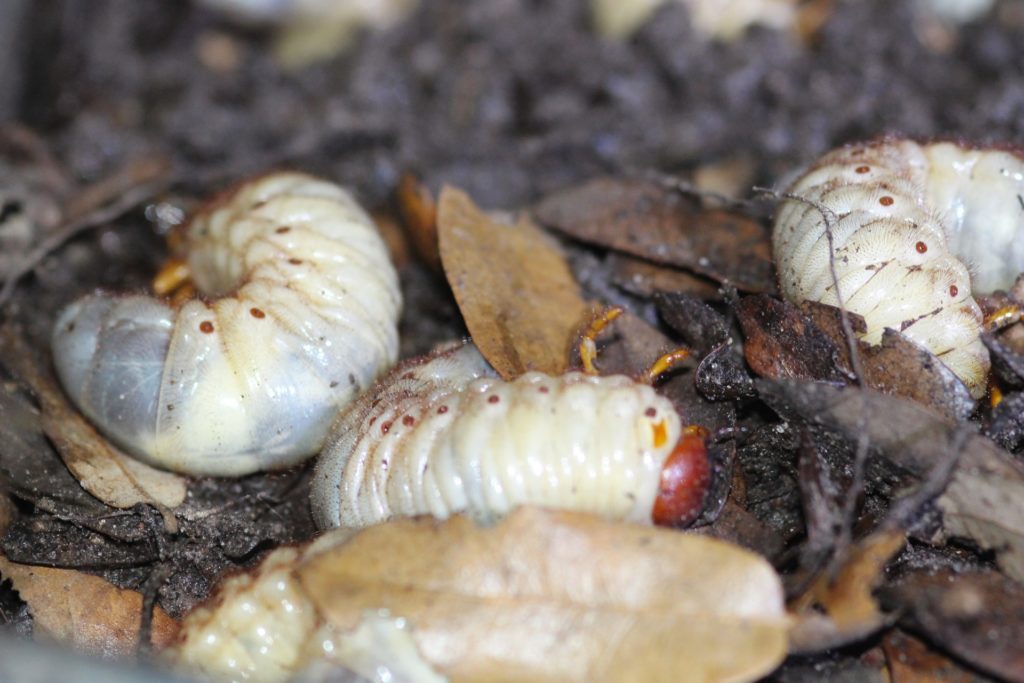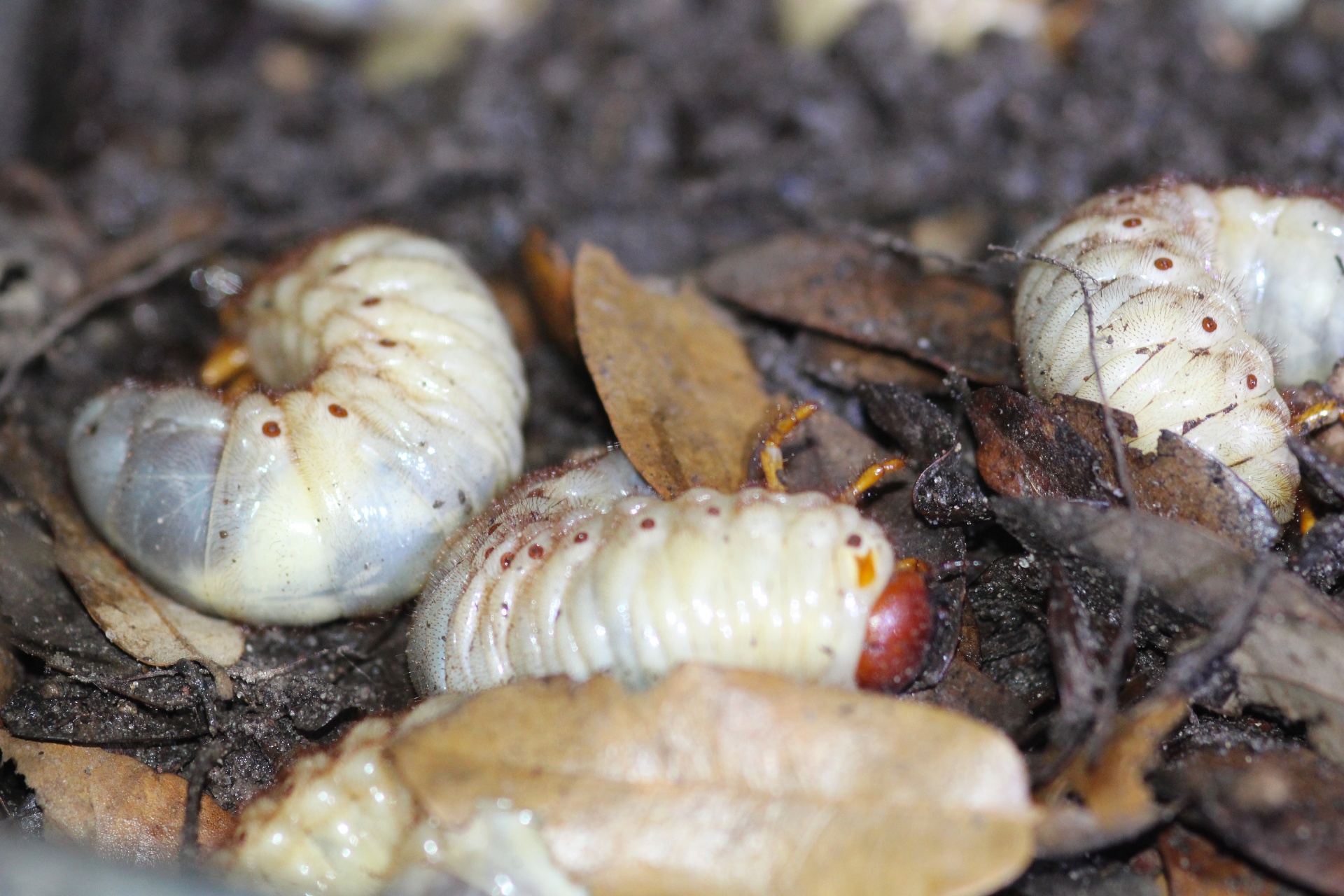In the past few weeks, lots of customers have been bringing us grass samples and photos of their lawns with tell-tale signs of 3 of the most common summertime pests: Take All Root Rot (fungus), chinch bugs, and grubworms. Here’s what to look for and some tips for prevention and treatment.
1. Take All Root Rot

TARR is the most serious and may be the most likely. We have seen lot of cases this year and it’s becoming a more common problem. Be on the lookout for yellowing areas in the lawn that eventually die leaving weakened brown or black dead roots. Spread Natures Blend compost over the area if the symptoms are mild or Disease X fungicide if more widespread. To be sure – bring us a grass sample and we can diagnose.
2. Chinch Bugs

Watch the edges of lawn near the sidewalk and driveway that look dry and wilted after you know you have watered well. Watch our quick video on how to check for chinch bugs, or bring us a grass sample and we can diagnose. Once you determine that chinch bugs are present, you can treat with hose-end Cyonara or Diatomaceaus Earth for an organic control.
Chinch bugs are more likely to attack a dry stressed lawn before a healthy, well-hydrated lawn. Look at your grass blades early in the morning. If the blades are folded, then the lawn is dry and ready to be watered. It will naturally be folded in the heat of the day which is why you should check early in the morning.
3. Grubworms

Areas of the lawn show signs of wilt even after you have watered. Dig down and look for grubworms under the soil. They eat the roots off your grass and other plants as well. You can treat for grubs with Season Long Grubworm Killer or Bayer 24 hour Grub Killer. Temperatures are too warm right now, but a good organic solution is to apply beneficial nematodes in the Spring so that they can colonize and be ready to eat grubs when they arrive in late Summer.

-DeAnna



Buck Z says
I’ve had some luck with beneficial nematodes. Actually seems to have moved my mole problem outside my lawn area where it had been applied, to an adjacent right of way.